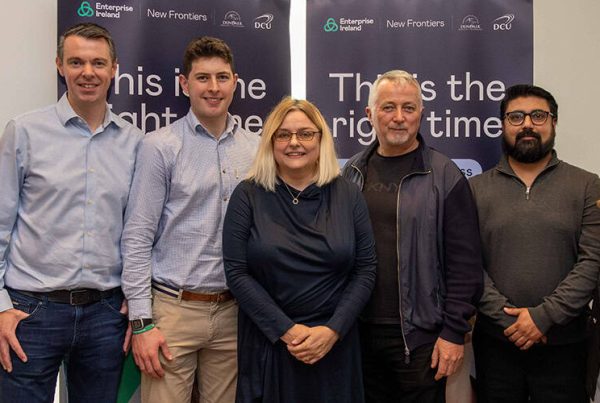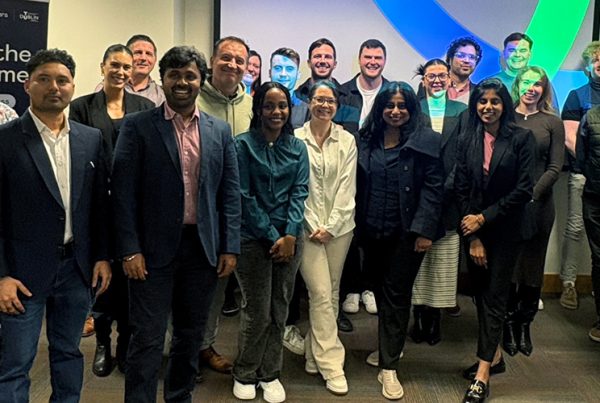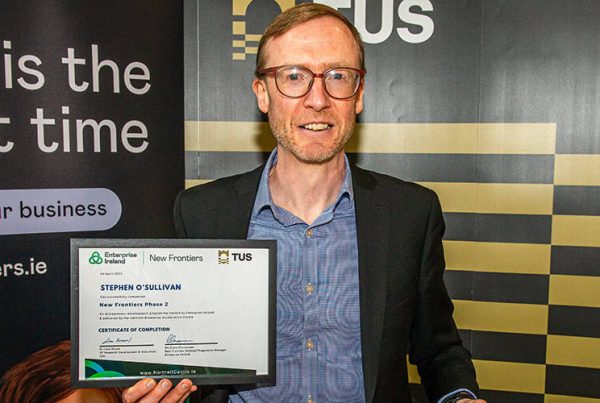

In our recent blog, Use These Easy Time Management Skills To Help Run Your Startup, we looked at how you can try to gain extra time in your day through some simple time management tricks. Sometimes, though, time needs a bit more help and that means looking at digitalisation!
Digitalisation isn’t simply about automating time-consuming tasks. Yes, it can help to streamline your processes and workflows, but it also brings in benefits such as:
- improved information security
- more flexible access
- easier collaboration and communication
- better customer experience
- greater transparency
- fewer duplications
- centralised insights for better decision-making
Let’s see what’s involved.
What is digitalisation?
First things first, what exactly is digitalisation? Surely every tech-savvy startup in 2023 is digitalised by default? Actually, not always. Even startups that code software for a living can find huge digitalisation gaps in their operations workflows or back-office procedures. That’s because good digitalisation doesn’t just happen, it’s a deliberate strategy and takes thought and planning.
Digitalisation means using the right combination of tools in a way that simplifies what you do across all your departments – sales, marketing, operations, accounting, etc. – and centralises data so that you have clarity over what’s happening in the business. Ideally, these tools will be integrated so that key data can move seamlessly between teams and it’s easy for colleagues to collaborate and communicate.
How do you make a start on digitalisation?
To see where you need to bring in digitalisation, or improve digitalisation, you’ll need to assess your business processes. Remember that as a startup grows, some of the tools being used will no longer be a good fit – you could be losing out on valuable data, missing opportunities to connect dots with other parts of the business, making teams work with clunky workflows, etc. So, I advise that you assess every workflow in the business, even if you think it’s already digitalised.
You’ll want to document your processes so you can see how they can be optimised. To do this, you could:
- Interview/survey employees at all levels of the organisation to understand how they complete their tasks and what processes they follow.
- Observe and document processes by watching employees as they complete tasks, documenting the steps they take.
- Identify bottlenecks and inefficiencies as you document processes, looking for areas where tasks are taking longer than expected or where there are delays in getting things done.
- Pinpoint opportunities for automation, because manual data entry is error-prone and many repetitive tasks can now be automated thanks to machine learning and AI.
- Find opportunities for connectivity either through better collaboration or by syncing data across your digital solutions.
This exercise is vitally important in a startup because you may have started witht just one or two people who did everything but now have entire teams in place for these functions. You will probably find they are working in a very different way now that everything has scaled.
The resulting documentation can take whatever form works best for you. The only requirement is that it is easy to understand and can be easily updated, because its crucial to keep process documentation up to date so that everyone works the same way and you can spot any inefficiencies that creep in.
Typical formats for documenting business processes and workflows include:
- Flowcharts
- Standard Operating Procedures (SOPs)
- Work Instruction manuals
- Process maps
- Mind maps
Define what digitalisation tools you need
Now you have a clearer idea of how everyone is completing tasks, you can define your requirements for new digital tools. This is an important step in the process of selecting the right tools for your business. Some approaches you can use include:
- Look at business goals: Identify the specific business goals you want to achieve with the digital solution. This will help you focus on the features and functionality that are most important for your business.
- Explore pain points: What pain points (inefficiencies, delays, manual tasks, etc.) did you identify when documenting your processes that could be solved with the right digital tool? These could be pain points experienced by the team or by your customers/end-users.
- Discuss employee requirements: Talk to employees at all levels of the organisation to understand the challenges they face so that you can find solutions that align with their workflows.
- Research industry best practice: Take a look at best practice in your industry to understand what other businesses are doing and what solutions are available.
The end result of this process will be a document that outlines your specific requirements for a digital solution. It should include a clear statement of the business goals you want to achieve, the pain points you want to address, and the features and functionality that are most important for your business. It should also include any specific technical requirements, such as compatibility with existing systems, security requirements, GDPR compliance, etc.
Finding the right digital tools
Your documented requirements will help you evaluate the solutions in the marketplace and serve as a reference when you talk to software vendors, as well as the developer or internal team that will be implementing the solution. It can also be the basis for creating a request for proposal (RFP) if you decide to look for vendors that way.
Evaluating digital tools in the market can be a time-consuming task. Here are a few ways to tackle it:
- Research existing solutions: Before you start testing different tools, research the market to identify products that might be a good fit. Look for ones that are designed for businesses similar to yours and that address the specific needs you’ve identified.
- Use online resources and reviews: Many websites and blogs provide reviews and comparisons of different digital tools. These resources can help you get a sense of the pros and cons of different products without having to sign up for a trial.
- Ask for a demo: Lots of digital platforms and software solutions provide demos of their products, which will give you a sense of how the tool works and whether it’s a good fit for your business. Don’t be afraid to ask questions during the demo and ask for case studies of how the solution has been implemented in a business similar to yours.
- Sign up for a free trial: Plenty of platforms also provide free trials, which can help you test the tool in a realistic setting and see how it works in your business environment. Make sure you are testing the full product, though, as sometimes free trials only give you access to a ‘lite’ version of the solution.
Remember that digital solutions are constantly evolving, and new tools are being launched all the time. It’s important to regularly review the digital tools available and the workflows in place to make sure that the best tool is being used.
Of course, you could go through this process only to discover that you are already using the perfect tool for the function in question, which is great and still a valuable exercise. You could even find that your existing solution is the right tool, but you aren’t on the right plan and so not getting the range of benefits or functionality you need. A simple upgrade could eliminate many of the pain points identified.
Harnessing the potential of digitalisation
Sometimes the biggest wins in digitalisation come from the smallest improvements. It could be that you are using tools that are perfect for your needs, but each tool stands alone within the business. This can lead to two major issues:
Data isn’t syncing across the business
This could occur in a variety of ways, for example:
- Your ecommerce solution doesn’t connect with your in-store inventory, so you don’t have real-time stock data online.
- Your employee leave information isn’t available wherever you do your job scheduling, so you have to keep cross-referencing to check availability.
Multiple instances of the same data
This could occur in a variety of ways, for example:
- Your marketing team and sales team have their own CRMs, meaning you have duplicate data and a high probability of inconsistencies/errors.
- You create your quotes in your CRM, meaning you have to then input the same information again when you invoice in your accounting software.
The solution in these situations is to get your systems talking to each other. This starts by mapping the data in your business and where it is able to travel from one solution to another. Then you will be able to see where it isn’t being communicated between tools and look for ways to change that.
You could assess the connectivity of different software with:
- A data flow analysis: Visualise the flow of data between different tools and systems in your organization. Identify where data is being duplicated and where there are gaps in the flow of data.
- A data map: A map that shows the relationships between different data sets and how they are used across different tools. This also helps you identify where data duplication is happening and where there are gaps in the flow of data.
Your next task will be to find ways to integrate your tools or allow data to move between them. Sometimes you only need the data to move in one direction, other times you will need to ensure that data added, updated, or deleted in one system will sync through to one or more other systems.
Improving connectivity between your systems
One way to do this is with a data integration tool that connects different systems in order to automate the flow of data between them. You can also such a tool to bring key data through to a central dashboard for monitoring KPIs. Zapier and Integrate.io are two well-known examples, but there are many others and the one that’s right will depend on which tools you are trying to connect.
Another way is to use the Application Programming Interface (API) of your digital systems to communicate and share data, enabling seamless integration and automation. This is a really flexible and scalable way to improve connectivity, but you will need support from a developer if this isn’t your area of expertise.
Good digitalisation: key principles to remember
As you can see, digitalisation can greatly enhance the efficiency and effectiveness of a startup, but it’s important to have a thought-out strategy. As you embark on your own digitalisation journey, don’t forget the key principles outlined in this blog: prioritise your goals, work on connectivity, and continuously monitor and maintain your integrations.
Don’t forget to implement data governance policies and procedures to ensure that data is accurate, consistent, and up to date across all systems. This includes creating guidelines for data entry, data validation, and data security. Regularly review the flow of data between different tools to ensure that they are working as intended and that data is accurate and consistent.
About the author

Scarlet Bierman
Scarlet Bierman is a content consultant, commissioned by Enterprise Ireland to fulfil the role of Editor of the New Frontiers website. She is an expert in designing and executing ethical marketing strategies and passionate about helping businesses to develop a quality online presence.
Recent articles

Eleven Founders Graduate From New Frontiers In The Border Mid-East Region

Laying The Right Groundwork Helps Startups Prepare For Export Success

Startup In Dublin: Learn More About New Frontiers On TU Dublin’s Grangegorman Campus

Michael Furey On The Success Of Ronspot: “The Most Important Thing Is Research”

Showcase Day Celebrates Twelve Ambitious Founders In County Dublin (IADT & NovaUCD)

Scientist Turned Founder Margaret Rae Is Building A Prevention System For The Aquaculture Sector

I Left You A Note Turns Negatives Into Positives For Hotels




 Joe Borza
Joe Borza
